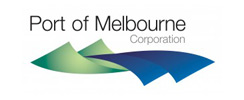The in situ preservation and reburial approach is a significant shift away from the dominant maritime archaeological approach whereby the bulk of a vessel and its assemblages are raised, conserved and stored in collections at huge expense.
The in situ preservation and reburial study of Clarence will:
- Make significant advances on current international reburial and in situ conservation approaches, in near coastal zones where impacts are highest;
- Add rapid capture 3 dimensional imaging of significant artefacts and objects;
- Trial, monitor and evaluate the reburial of artefacts in an in situ storage depot off site but in close proximity in more stable conditions;
- Perform and improve very detailed conservation monitoring procedures following the reburial of shipwreck elements and objects;
- Create a virtual representation of the site that will enable it to be reinterrogated over time; and
- Produce a sustainable, cost-effective and strategic solution to a national shipwreck management crisis.
Raising parts or all of a shipwreck is only justifiable where exceptional significance, representativeness and educational values are demonstrable: notable examples are the Mary Rose, Vasa and Batavia. For most shipwrecks, however, the bulk recovery approach is no longer sustainable, and not funded by government, collection institutions or developers.
Long-term conservation and storage of large cultural assemblages and vessel fabric, while a necessity under the Convention for the Protection of the Underwater Cultural Heritage (UNESCO 2001), is becoming prohibitively expensive and requires novel management approaches to mitigate these costs. Where it can be shown that natural processes are diminishing site integrity at an unacceptable rate, a case may be made for stabilisation and/or full excavation with the bulk of the artefact assemblage reburied on site along with the shipwreck itself (the in situ preservation option). If impacts on a shipwreck are inevitable then reburial of the shipwreck and its associated assemblage in proximal, stable marine sediments – the reburial protocol – would represent the next available option.
Reburial allows for detailed and rapid in situ recording on site and it provides for the ongoing integrity of the site’s matrix and allows future access to the reburied materials. Comprehensive studies of the original shipwreck context, combined with ongoing monitoring of the underwater reburial site, are critical to continue to evaluate the reburial strategy. Refining methodologies for on-going monitoring and identifying the effects of reburial on particular material types are core issues for this project.
A reburial collection management methodology will also be developed to assist in the later recovery of particular artefacts for further investigation, monitoring and research. Our reburial methodology will subject all excavated artefacts and objects to a sophisticated, forensic documentation prior to their reburial. Rapid documentation includes x-ray imaging on the working barge-platform and morphometric and geochemical recording. This approach maximises information gain, while minimising deterioration. Documentation will be entered rapidly into a GIS database allowing unprecedented sophistication in how information is handled. This has not previously been achieved in maritime archaeology.Where the interpretive value of an excavated object is established (but it is not going to be kept and conserved), 3D X-ray imaging and optical capture enable an identical reproduction to be made. Such a replica ensures ongoing possibilities for display and study after the object is reburied. The digital scan data is also a permanent record of the condition of the artefact enabling further detailed analysis and interpretation. 3D imaging is particularly valuable for organic objects which cannot be handled until significant and time-consuming conservation has been undertaken.

















